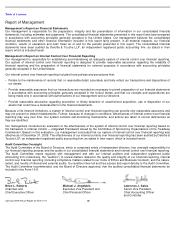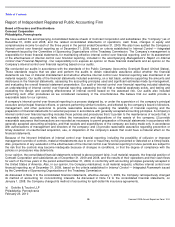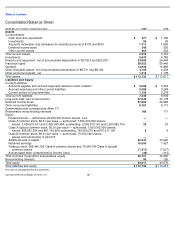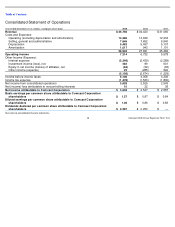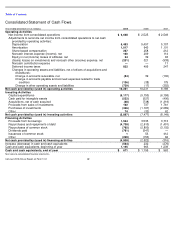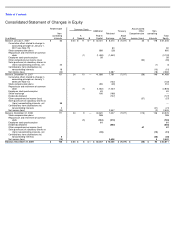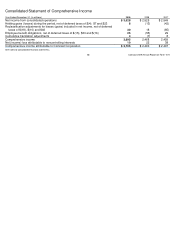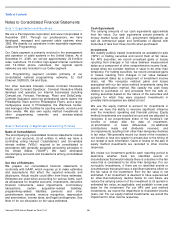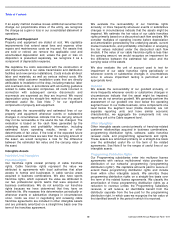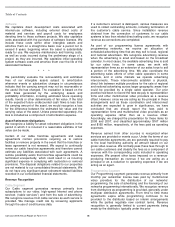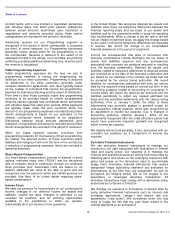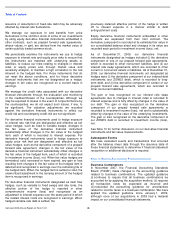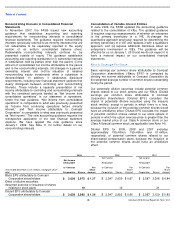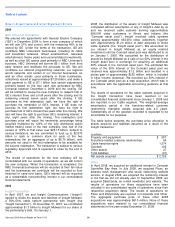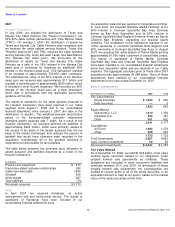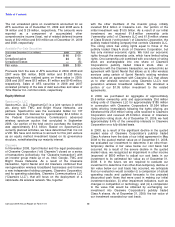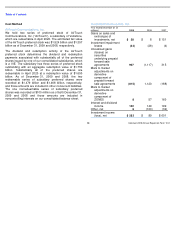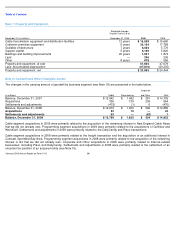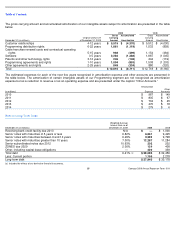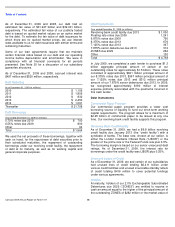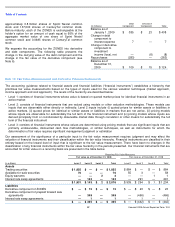Comcast 2009 Annual Report Download - page 56
Download and view the complete annual report
Please find page 56 of the 2009 Comcast annual report below. You can navigate through the pages in the report by either clicking on the pages listed below, or by using the keyword search tool below to find specific information within the annual report.
Table of Contents
47
Comcast 2009 Annual Report on Form 10-
K
contract terms, until a new contract is negotiated, sometimes
with effective dates that affect prior periods. Differences
between actual amounts determined upon resolution of
negotiations and amounts recorded during these interim
arrangements are recorded in the period of resolution.
Advertising revenue for our Programming segment is
recognized in the period in which commercials or programs
are aired. In some instances, our Programming businesses
guarantee viewer ratings either for the programming or for
the commercials. Revenue is deferred to the extent of an
estimated shortfall in the ratings. Such shortfalls are primarily
settled by providing additional advertising time, at which point
the revenue is recognized.
Cable Programming Expenses
Cable programming expenses are the fees we pay to
programming networks to license the programming we
distribute to our video customers. Programming is acquired
for distribution to our video customers, generally under
multiyear distribution agreements, with rates typically based
on the number of customers that receive the programming,
adjusted for channel positioning and the extent of distribution.
From time to time these contracts expire and programming
continues to be provided based on interim arrangements
while the parties negotiate new contractual terms, sometimes
with effective dates that affect prior periods. While payments
are typically made under the prior contract’s terms, the
amount of our programming expenses recorded during these
interim arrangements is based on our estimates of the
ultimate contractual terms expected to be negotiated.
Differences between actual amounts determined upon
resolution of negotiations and amounts recorded during these
interim arrangements are recorded in the period of resolution.
When our Cable segment receives incentives from
programming networks for the licensing of their programming,
we classify the deferred portion of these incentives within
liabilities and recognize them over the term of the contract as
a reduction of programming expenses, which are included in
operating expenses.
Share-Based Compensation
Our share-based compensation consists of awards of stock
options, restricted share units (“RSUs”) and the discounted
sale of company stock to employees through our employee
stock purchase plan. Associated costs are based on an
award’s estimated fair value at the date of grant and are
recognized over the period in which any related services are
provided. See Note 14 for further details regarding share-
based compensation.
Income Taxes
We base our provision for income taxes on our current period
income, changes in our deferred income tax assets and
liabilities, income tax rates, changes in estimates of our
uncertain tax positions, and tax planning opportunities
available in the jurisdictions in which we operate.
Substantially all of our income is from operations
in the United States. We recognize deferred tax assets and
liabilities when there are temporary differences between the
financial reporting basis and tax basis of our assets and
liabilities and for the expected benefits of using net operating
loss carryforwards. When a change in the tax rate or tax law
has an impact on deferred taxes, we apply the change based
on the years in which the temporary differences are expected
to reverse. We record the change in our consolidated
financial statements in the period of enactment.
Income tax consequences that arise in connection with
business combinations include identifying the tax bases of
assets and liabilities acquired and any contingencies
associated with uncertain tax positions assumed or resulting
from the business combination. Deferred tax assets and
liabilities related to temporary differences of acquired entities
are recorded as of the date of the business combination and
are based on our estimate of the ultimate tax basis that will
be accepted by the various taxing authorities. We record
liabilities for contingencies associated with prior tax returns
filed by the acquired entity based on criteria set forth in the
accounting guidance related to accounting for uncertainty in
income taxes. We adjust the deferred tax accounts and the
liabilities periodically to reflect any revised estimated tax
basis and any estimated settlements with the various taxing
authorities. Prior to January 1, 2009, the effect of these
adjustments was generally applied to goodwill except for
post-acquisition interest expense, which was recognized as
an adjustment to income tax expense. Due to changes in
accounting guidance, effective January 1, 2009, all tax
adjustments recognized after the initial allocation period that
would have previously impacted goodwill are recognized
within income tax expense.
We classify interest and penalties, if any, associated with our
uncertain tax positions as a component of income tax
expense.
Derivative Financial Instruments
We use derivative financial instruments to manage our
exposure to the risks associated with fluctuations in interest
rates and equity prices. Our objective is to manage the
financial and operational exposure arising from these risks by
offsetting gains and losses on the underlying exposures with
gains and losses on the derivatives used to economically
hedge them. Derivative financial instruments that receive
designated hedge accounting treatment are evaluated for
effectiveness at the time they are designated, as well as
throughout the hedging period. We do not engage in any
speculative or leveraged derivative transactions. All
derivative transactions must comply with a derivatives policy
authorized by our Board of Directors.
We manage our exposure to fluctuations in interest rates by
using derivative financial instruments such as interest rate
exchange agreements (“swaps”) and interest rate lock
agreements (“rate locks”). We sometimes enter into rate
locks to hedge the risk that the cash flows related to the
interest payments on an anticipated


